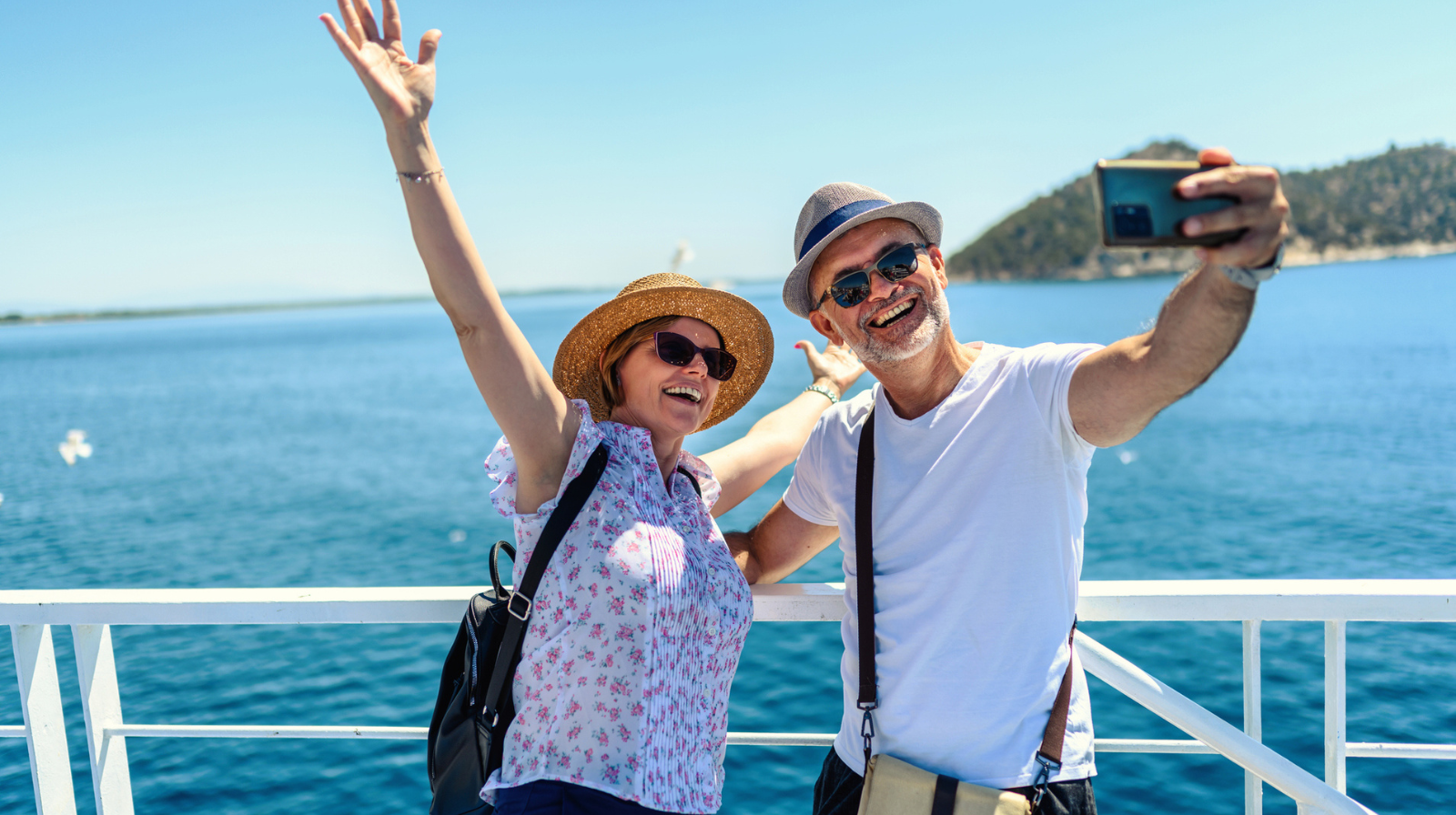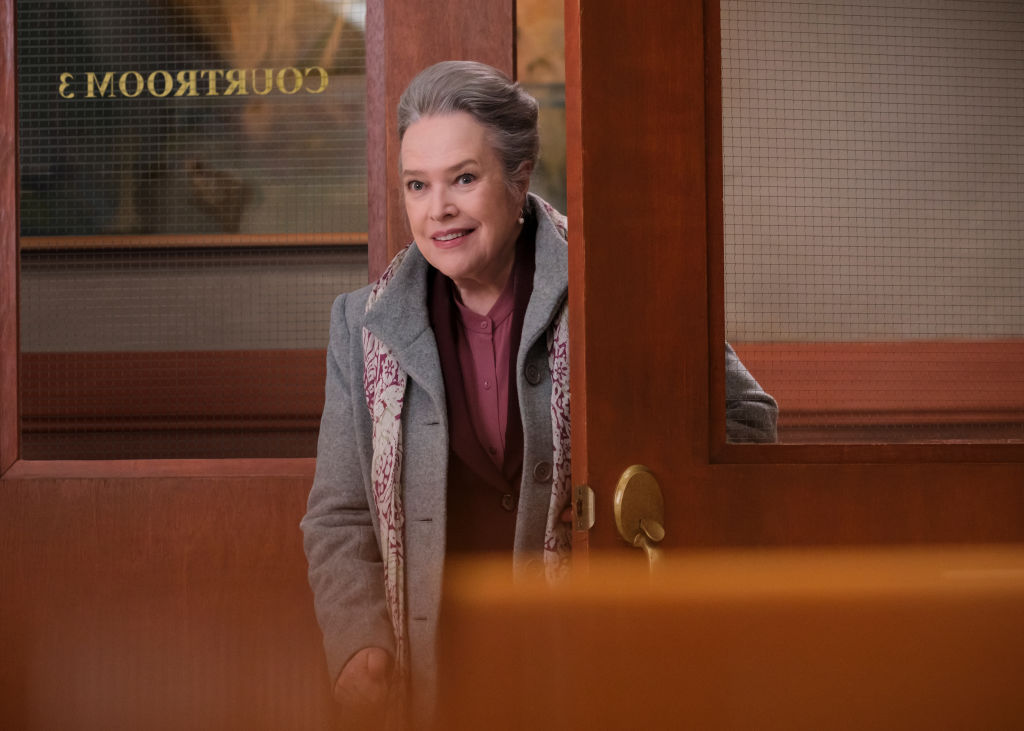Let’s Get Visible

Subscribe to Catalyst
Subscribe to get our magazine delivered right to your inbox
Related Articles
Related Articles
Older adults are more likely to suffer from social isolation. Loneliness is increasingly being recognized as bad for our health. The good news is that mattering and belonging can flip the script. Our series explores these and other related concepts.
Some get frustrated by the feeling of “invisibility” that many older adults experience. Others, though, consider it their super-power.
“The feeling of being invisible comes up in the hit show Matlock, with Kathy Bates, where she says that, as women get older, they ‘become damn near invisible’,” says Dr. Gordon Flett, Honorary President of the Canadian Psychological Association 2024-2025 and former York University Canada Research Chair. “And then she goes on to say that she can use that to her advantage because people don’t see her coming.”
Not everyone is able to find a silver lining in the cloud of invisibility, probably because “feeling seen” is an important part of feeling like you matter to the world around you. And “mattering” is important to our well-being, according to Flett’s research, which has shown that feeling like you matter is associated with resiliency. Conversely, “anti-mattering” is connected to stigma, discrimination, psychological distress, depression, and loneliness. “Feeling invisible to others is at the heart of anti-mattering,” says Flett.
Although some older men complain that they feel invisible on occasion, the phenomenon is so widely felt for women over 50 that it’s been dubbed the “Invisible Woman Syndrome.” What this suggests is that stigma for older adults isn’t only a matter of age. We also experience age stigma in relation to our intersectional identities—class, ethnicity, gender, religious beliefs, and other identity markers.

Kathy Bates stars as the brilliant septuagenarian Madeline Matlock in the drama series MATLOCK, inspired by the classic television series of the same name. Madeline achieved success in her younger years and decides to rejoin the workforce at a prestigious law firm, where she uses her unassuming demeanour and wily tactics to win cases and expose corruption from within. Photo: Brooke Palmer/CBS via Getty Images.
Who turned on the cloaking device?
For this reason, Dr. Susan Braedley, a Professor at Carleton University’s School of Social Work, says that, after fifteen years of studying long-term care and age-friendly communities in national and international research projects, one of her teams’ key findings is that inclusivity must guide the planning and design of care homes, retirement communities, and programming for older adults.
“We’ve seen a lot of promising practices,” says Dr. Braedley. “And then we’ve seen some things to avoid, things that caused great distress to older adults.”
For example, she recalls a day program designed for people with mild cognitive impairment in a Canadian community where many residents’ first language was Mandarin. Personal support workers didn’t speak Mandarin, and the activities all assumed that participants were familiar with mainstream Canadian customs and holidays.
“If you think you’re supposed to know the answers but don’t, it can be really confusing, because you start to think your memory is worse than it is,” Dr. Braedley explains. “The program produced a lot of anxiety. It was supposed to reduce social isolation for people living with dementia and, actually, I think it was having the opposite effect. Cut-and-paste programs don’t work.”
It’s not all bad news, though. In the course of her research, Dr. Braedley observed scores of programs that were culturally appropriate, community-based, and well-designed for the actual participants. And, in those spaces, Dr. Braedley witnessed and, herself, felt, a lot of joy. One of her many favourites was a program offered at the 519, a non-profit agency in Toronto that serves 2SLGBTQI+ communities. This program matched younger volunteers from the community with older adults experiencing loneliness.
“The older people had amazing experiences, sometimes just by having someone to help them negotiate the city when they were feeling uncertain about being out on their own,” she says. “But what was so interesting is that many of the younger people were working remotely and were saying, ‘We’re lonely, too. We’re isolated’.”
Eddy Elmer, a Vancouver gerontologist and research consultant specializing in aging and mental health, says that older people from 2SLGBTQI+ communities are far more likely to be socially isolated and lonely.
“Some of it’s just because it’s a smaller population base, so it’s harder to meet people or find a partner,” says Elmer. “LGBT people over the age of 70 also grew up at a time when being gay was highly stigmatized. It was illegal, it was criminalized, and it was pathologized, so they’re more afraid of being rejected and discriminated against.”
Elmer fears that we’re taking steps backwards now, with changes in our online climate, and a general rise in anti-2SLGBTQI+ sentiment. As such, he warns that risks are on the rise, particularly for transgender older adults.
The mysterious case of the vanishing older adult
Older people experiencing income insecurity, homelessness, incarceration, or pre-existing depression all tend to be more vulnerable, as are older men who have recently experienced a life transition, such as retirement. Some attribute this to the fact that, broadly speaking, women have larger social networks. When men stop working, by contrast, many lose their most important social space.
For many, though, it’s also about a shift in self-perception and a loss of identity.
“People are saying to me, ‘I was a high school principal, or a professor, or a lawyer and I had all these different roles and identities’,” says Dr. Raza Mirza, Director, National Partnerships for HelpAge Canada. “And then they retire, and their perception is that, ‘I’m seen as is as an older person and we’re all kind of lumped into this one big group. That’s my identity now’.”
One of Mirza’s many research projects aimed at helping older adults is a study with Men’s Sheds Canada, a program designed to help people establish new roles as mentors in society and connect and engage with other men of all ages.
“The idea is to empower older men,” he says. “It’s also about health promotion, though, because they can talk to one another through life transitions, share resources, and share information that impacts the mental and physical well-being of older men.”
That could have a serious impact given that, simple preventative measures and screening can make a big difference when it comes to the social, mental, and physical health of older adults. Hearing aids and eyeglasses, for example, are a low-intervention way to reduce social isolation and improve well-being.
“Sensory loss is very important because many older adults have hearing or vision problems,” says Dr. Fereshteh Mehrabi, post-doctoral research fellow in Concordia University’s department of psychology. “Dramatic hearing loss is much more prevalent among men than women and, often, they choose not to even try to communicate of socialize at all because it seems like too much of a bother, which can contribute to frailty over time, as reduced communication and social engagement may lead to physical decline and isolation.”
Seen, heard, and invited to the party
There’s some debate about why older men experience hearing loss, but there’s little doubt as to why many older men don’t want to use a hearing aid, namely, because that’s associated with older people. In other words, people often choose to withdraw from the world rather than deal with age stigma. (Incidentally, the new generation of hearing aids are far more discreet, and the tech allows users to do neat things like tune out ambient noise to focus on the person speaking, which, if you think about it, sounds like a good superpower to have).
Older women aren’t immune to hearing problems, but, by the numbers, Mehrabi says that, for women, screening for and preventing frailty should be the top priority. Women are far more likely to experience frailty than men and her recent study, published in Age and Ageing found that, over a long-term period, frailty leads to social isolation and loneliness, perhaps for the simple reason that it’s harder to go out and join in social and physical activities. It doesn’t help that, even though women’s fitness is a massive growth industry, there are plenty of cultural and systemic barriers keeping older women from building muscle with good diets and resistance exercises.
“The perfect neoliberal older person has enough money to last them the rest of their life and is using their Fitbit to keep them active and healthy,” says Dr. Braedley. “The idea is that we have so much control and we can keep ourselves healthy if we eat right and do all the good things. Which is ridiculous because we all die.”
“Many, many people, and disproportionately women, don’t fall into that model of the perfect, self-reliant, older person,” she adds. “So, I think it’s about that. I think it’s about classism, sexism, racism, and ableism all combined.”
Back to those invisible women, it’s important to note that it can feel like a superpower for some, but it’s damaging to others. “The older person who feels invisible and comes from a marginalized background will not see being invisible as having any sort of benefit,” says Flett. “For folks experiencing co-occurring injustice, inequity, and invisibility, that’s a very painful combination.”
That makes it everyone’s responsibility to find a way to make people secure in the knowledge that they matter—no matter what their age.
Author: Christine Sismondo is a Toronto writer who hopes to one day live with friends in a communal living project modelled after The Golden Girls. We still need a cheerful character like Rose Nyland to join the collective and entertain us with her stories. And, it almost doesn’t need saying, but Kathy Bates is always welcome!